
A garden lawn is probably the most hostile environment provided by gardeners in furtherance of obtaining a beautiful garden.
This is one reason for aerating a lawn Nowhere else are plants - and grasses are indeed plants - subjected to such willful abuse than on the garden lawn.
Our grasses were originally grown as food crops for grazing animals - sometimes natural as with the sea marshes for grazing geese, and sometimes agriculturally for grazing cattle. We will omit the grasses that are grown as cereals, for they are generally not of the varieties that we have adapted for lawn use.
No other range of garden plants suffer - or would tolerate - the abuse that we heap upon those that serve us as our lawn! In 'normal' use our lawn is trampled in all manner of operations. Mowing, games, even walking, all serve to gradually compact the top few inches of soil that is largely responsible for the continuing health of the lawn grasses.
This compaction of soil does two things that are detrimental to our lawns. Trampled - or compacted - soils gradually prevent the free movement of water to the roots zone, and also exclude the all important air from the soil.
Aeration core from lawn aerating operation
A single 'core' taken from a Lawn Aerating machine. This shows a heavy soil, a build up of thatch starting, and very poor root growth. The heavy, poorly-drained soil is conducive to the coarse grass that is seen here.
Compaction in itself is reason enough to somehow aerate the soil under the lawn: another reason is that of 'thatch' which builds up as a layer of almost impenetrable 'straw' on the surface of the soil beneath the green grass that we see.
Whilst lawn thatch can be removed over time with raking the lawn, compaction needs more drastic action by aeration of the top 4 inches of soil beneath the lawn. Most of the operations that serve to aerate your lawn will also negate the effects of thatch build up.
Plant roots need air - or Oxygen to be more precise - to develop and grow. Whilst some plants are well adapted to growing in bogs, swamps etc, grasses are not. They need to be able to access Oxygen from the minute spaces between the individual root particles (crumbs). They cannot assimilate Oxygen from water - even though water is composed of Oxygen and Hydrogen. Soil compaction does two things that are detrimental to good root growth. Aerating a lawn dose much to redress the balance ...
Aerating a lawn is simply the means of getting air - and also water - freely available to the lawn grass plant roots. It can be done over time by 'opening up' the structure of the soil below the turf, which is a long term solution. But, it is normally achieved as a result of a noticed problem with waterlogged lawn areas or poor turf sod growth.
If aeration is needed, it is normally needed quickly, with no time for the preferred long term solution of building up organic matter in the soil.
Aeration of the lawn is normally carried out by either spiking the lawn with fork tines, or using a device with hollow tines. Over time, the addition of sharp sand to the surface of the lawn - and brushed in - can also lead to aeration, as the sand is taken down into the soil by various activities - thereby opening up the crumb structure.
The simplest method - for small isolated areas - of aerating a lawn is by 'spiking' with a sturdy, normal garden fork. A digging fork (rather than a border fork) is best for it has a wider 'tread' area. A pair of hefty boots will be a requirement if you are not to suffer sore foot instep problems. As with digging, you should place the heel of the foot onto the fork and not your instep!
Holes from lawn areation operations
The fork is simply forced into the lawn to a depth of 3 - 4 inches, and gently rocked back and forth to both enlarge the holes slightly and to facilitate the removal of the fork from the soil. Best done of course when the soil is moist - even if you water it the previous evening! If you are up to it, large areas can be done this way.
After your first set of holes (4) just move backwards around 6 inches and repeat. There is no science as to how close your sets of holes should be. Anywhere between 6 in - 9in is fine. In tandem with this operation - especially with heavier soils of areas that are prone to compaction - (natural path lines, under the washing line, under overhanging trees etc) it would be a good idea to apply a suitable top dressing, brushed into the holes.
This will provide natural water/air channels for many a year! It will certainly aid surface drainage, though might need additional work if there is a substantial drainage problem - rather than simply compaction.
Another variation on the common garden fork spiking, would be the hand propelled (pushed) spiked roller. This is better if weights can be added to allow for better penetration of the soil - otherwise it will simply roll along the lawn, leaving nothing more than a few dimples. It will not provide the hollowed out aeration holes, such as are seen in the image
If you want to go one better with the manual treading operation, you can purchase or rent a hollow tine fork. This will be harder work, as you will then be taking a full core of soil out of the ground - as in the image above. However, you will have a series holes, which can either be left 'open' or better still - top dressed with a good open mixture top-dressing. The image above shows course sand ready to be brushed into the hollow tine holes. It is good idea to do this as you progress - brushing into the holes before you have to trample over them again!
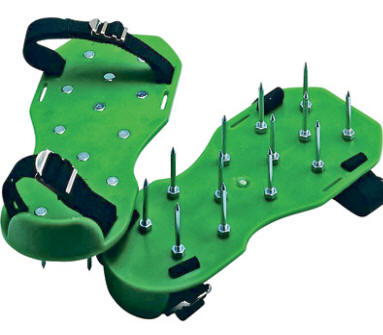
lawn spike aerator shoes
This is hard work! The shoes are normally slip-over plastic/rubber pads with a number of spikes. The spikes are not much more than threaded nails, held into place with screw fastening. because they are thin, you will not expect the type of hole you will get with a lawn spiked roller, and certainly not a core of soil removed. They are not hollow tines.
Providing the lawn is moist, and the soil reasonably soft, then it is possible to get a few holes in the lawn, which can then have sand brushed into them. Many 'purists' say that lawn spiking shoes do not work, and it would be folly to think that you can spike a whole lawn - even a small one - without feeling the effects in your muscles.
But, with a well-watered lawn, it is possible to do more good than harm by treading with lawn aeration shoes. The best way forward is to walk-spike the lawn on a moist surface, then let it dry out and brush sand into the resultant holes. Even a penetration of a couple of inches helps with surface water drainage. If you are up to it physically - and like to have something to boast about - then lawn aerator shoes will work for you!
Make sure that you slip the aerator shoe over a sturdy boot or shoe. Do NOT be tempted to simply slip them over your feet - however man you think you are!
Rise on mechanical lawn aerating equipment.
The top-end, ultimate lawn aeration equipment is the 'ride-on' professional job as seen being used on this golf course green. It is only of use for large lawn areas, where you do not constantly have to do tight turns on the grass - which will only lead to further compaction. This type of machine invariably has (Should have) wide tread tyres which spreads the weight load - avoiding severe compaction.
Smaller versions of this machine are available from professional sources or from good hire shops.
Walk-behind machines - similar to motorised lawn-mowers are also available and probably more suited to amateur or occasional use. This type of aerator will also do a good job - removing complete cores of earth from the lawn - normally leaving a hole around 2-4in depth. With the walk-behind machine, it is better if you can walk to the side of the machine and not therefore crush the resultant soil cores on the surface.
The cores can either be brushed back into the surface of the lawn - breaking up as they enter the holes from which they came. This then replaces the soil back into the lawn, but leaves the un-compacted holes in place. This is best done if there is a light soil. heavier soils such as clay and silt soils would be better served if the cores were brushed off and a suitable open textured top dressing applied as mentioned earlier.
Lawns should be aerated not more than annually - unless there is a very severe case of compaction. This would be the exception rather than the rule. It may well be that your lawn does not ever need to be aerated.
The standard non-professional test to see if your lawn needs aerating, is simply to push a screwdriver down into the lawn when the soil is moist. If it can be pushed in a few inches, then the likelihood is that your lawn will not need aeration. BUT, a contradiction to this rule/test is if you have a clay soil. This will enable the screwdriver to be inserted into the soil far easier than a sandy soil -and certainly if your soil is stony.
A visual test and experience of what your lawn surface should be like after heavy rain is probably a better guide. I would argue that a sandy soil will rarely ever need aerating, and then only if organic matter were to be incorporated by way of top dressing. Otherwise, the lawn will dry out even quicker as a result of aeration. Not a good idea on well drained drought susceptible light soils.
Soil core aeration is often recommended as being suitable for thatch removal. Not so, thatch removal would always be better carried out by raking - manually or mechanically.
Autumn or Spring would be ideal times to carry out lawn soil aeration. Spring, when the soil is moist and the rapid growing grass will soon cover up any unsightly mess left my core removal is better. Problem being, that there are so many other jobs that need doing at that time.
Any lawn fertilising or feeding should be carried out prior to soil aeration. This will ensure that there are no localised build-ups of scorching fertiliser brushed into the core holes.
If aerating a lawn is carried out in the fall, it is best done several weeks before the normal slow-down of grass growth - again to allow the lawn to recover and regain its cosmetic appeal before the winter sets in.
One of the best examples I have seen of how beneficial the addition and brushing in of sand is to a potentially compacted area, was on a football pitch in Surrey - on heavy near clay soil. The goal mouth at one end, and the opposite half of the centre circle were treated monthly with a dressing of sharp sand - simply brushed into the sward. At the end of the football season, both sanded areas were far superior in terms of grass cover than the un-sanded areas.
So - whilst not strictly lawn aeration - this could well be the answer to many localised areas on domestic lawns as a medium and long term measure.
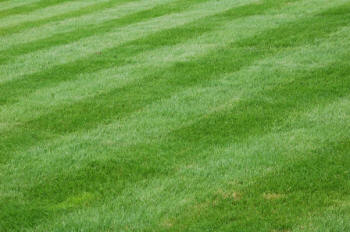
The First Cut
The spring season is an important time for getting your lawn into top shape for the following months. What you do now in the spring by way of lawn care, will determine how well your lawn will cope with the wear and tear of day to day use, and also its ability to withstand drought or even water-logging during the summer months.
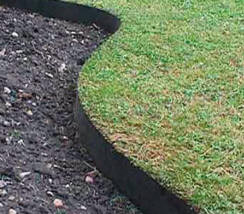
Lawn Care Main
Lawns take up a lot of time compared with most aspects of the garden. In spite of the time and care lavished upon lawns, many fail to live up to expectations. Maybe the expectations are too great to start with. Problem being, that next door and surrounding areas seem to have better lawns!
Throwing money at an established lawn or patch of straw is not always the best way forward - neither the most successful in terms of attaining the quality lawn that you want. It is always a good ide to take a step backward, to see what the problem really is with the lawn. More often than not it will be something to do with your lawn care regime.
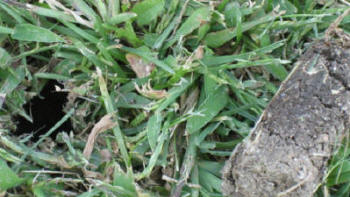
Lawn Aeration
Not all lawns need aeration; but most do! Soil Compaction drives air out of the soil. A garden lawn is probably the most hostile environment provided by gardeners in furtherance of obtaining a beautiful garden. This is one reason for aerating a lawn. No other plant / grass are subjected to such willful abuse than the grass on the garden lawn, it needs care!
Top Dressing Lawns
Top Dressing of Lawns is beneficial. It encourages new basal growth of the grass plants - giving a thicker sward of grass. Top Dressing is also a good way to 'level out' the bumps and hollows in an uneven lawn.
Top dressing is normally carried out in mid spring. It can be done at any time in the growing season (March-October), but a dressing in the spring soon 'disappears' under the resultant lush lawn growth. Earlier in the growing season - but not in the autumn - a suitable fertiliser or feed can be added to the top dressing to give that little bit extra.
Lawn Problems
There are many and varied problems associated with keeping a good - or even reasonable - lawn. Quite often the problems are caused by something quite simple. That is, if you know what to look for! Describing a lawn problem seems to be beyond many of the people who write emails to me for help. A brown spot is a brown spot is it not? Well, err no, not always.
Bumps in the Lawn
Ok! Let's get one thing right, straight away. You do not get a level lawn by using a roller. Using a roller, simply gives you hard bumps and hard hollows - and all the bits in between.
In fact, unless you are going to carry out all of the other operations necessary for a first class lawn, you can get rid of the roller altogether - although I might concede that it is useful for a light run over before the first cut after the winter.
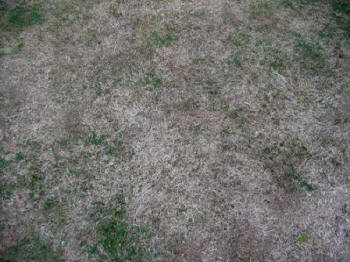
Brown Patches in Lawns
There are several causes of brown patches on lawns and other bare areas on the lawn, some are outlined below... Broadly, lawn brown patches can be split into three categories - depending upon the size of the patch. Recognising the size and shape of the patch - simple you might think - can go a long way in identifying the cause of the brown patch. I have had mails in the past where the write has claimed to have brown patches on the lawn, when in fact the entire lawn was brown - killed off by the wrong use of a certain weedkiller!

Lawn Moss Killer
If you really want to eradicate moss from your lawn, then you have to find out the actual problem that is causing it, rather than just treating it. The reasons are various, but not too difficult to isolate.
They can be one or several of the causes outlined below.
The latter is also available as a ready to use 'Moss Gun' for small patches. Neither do anything by way of treating the basic problem of moss in lawns. They simply are simply Lawn Moss Treatments - killing the moss which is there. It will return. You can alsouse lawn sand
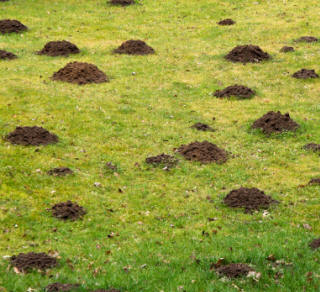
Moles in your Lawn
Moles are one of the most frustrating of all garden and lawn pests! They are rarely seen, but can cause absolute mayhem. The damage they do to plants is minimal, but if you are unfortunate enough to have moles in your garden, they will cause you more angst than an infestation of aphids! The main problem being, that they are so difficult to get rid of, and you normally see the damage they do, before you realize that you have a mole or so!
Cute little things they might be, but if your lawn is your pride an joy, or if it is just a nice lawn to sit and relax, the molehill trademark will soon turn you against them! One mole can wreak havoc in the garden, but a few and you have a potential disaster.

Fairy Rings in Lawns and Turf
Fairy rings in lawns normally start to show up in late spring or mid-summer. They then carry on growing right through until the autumn and usually into subsequent years. They are easily recognised by either of two or both trademarks. Once they have started, they will be visible throughout the year.
They are most commonly seen as dark green circles of lush grass in the lawn usually after they are a half a metre or so across, though they are visible at first as a tuft of dark green grass.
The Fairy rings may also be first noticed as a group of toadstools manifest in mid-summer. (Sometimes without the dark green grass!) Not all toadstools in the lawn are as a result of Fairy Rings.

Dogs Fouling Lawns | General problems
The main problem with dogs on lawns is that of the brown patches caused by bitches urinating. Male dogs are not such a problem in this respect, for they do it differently..
The brown patches tend to be a circular patch with bright green grass growing around the perimeter as the bitches urine eventually breaks down to Nitrogen, which then feeds the area outside the actual damage. The brown patch is basically scorching - similar to that caused by applying too much fertilizer - especially in dry conditions.
Treatment by soaking the area with water - immediately after the bitch has done the deed! Soaking the brown patches after they have formed will be absolutely essential if you are going to over-seed the patches.
Lawn and Garden Edging
Garden lawns have to stop at some point, often causing a minor problem as to how to end or edge your garden with your lawn. Much will depend upon the style of your garden, but you will also have to take into account basic things like, the type of lawn mower you want to use, and even the basics of, how much time do you want to spend giving your lawn a neat finish!
It is not normally a good idea to simply end your lawn at the boundary of your garden edge; against a wall or fence. This will inevitably lead to either additional maintenance work - or an untidy finish, where the mower blade cannot quite get to the edges of the turf at the garden border edge.
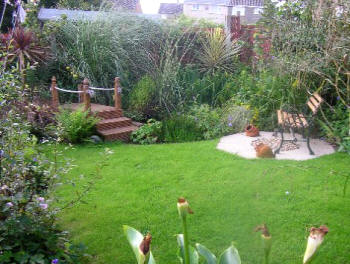
Feeding Lawns
Feeding a lawn is a relatively simple operation, but so many get it wrong, or do it when it it not necessary! Here's how and when to do it; and what to use.
Each of the aspects are important. Do it at the wrong time and you could end up with a weakened lawn. Use the wrong feed and scorching or unhealthy grass can result.
The process that causes most problems, is simply that of putting your fertiliser on the grass! Uneven application leads to a patch lawn at best, and a ruined lawn at worst!
Lawn Thoughts
The big sign outside the garden store commanded WINTERIZE YOUR LAWN.
I've fed the lawn: I've watered the lawn: I've mowed the lawn: raked it and watched a lot of it die anyway. Now I'm supposed to winterize my lawn? I hope it's not too late.
Grass lawns have to be the stupidest thing we've come up with outside of the IRS! We constantly battle dandelions, Queen Anne's lace, thistle, violets, chicory and clover that thrive naturally, so we can grow grass that must be nursed through an annual four-step chemical dependency.
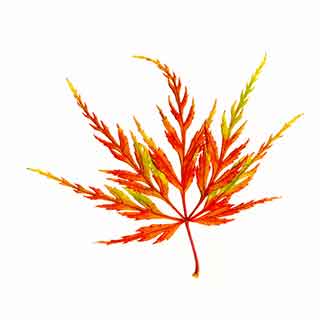
 Tweets by GardenSeekerG
Tweets by GardenSeekerG Hydrangea Petiolaris - Climbing Hydrangea | https://t.co/b7LmizQJvx https://t.co/FtsUGUZJPT
— GardenSeeker.Garden (@GardenseekerG) August 29, 2020
